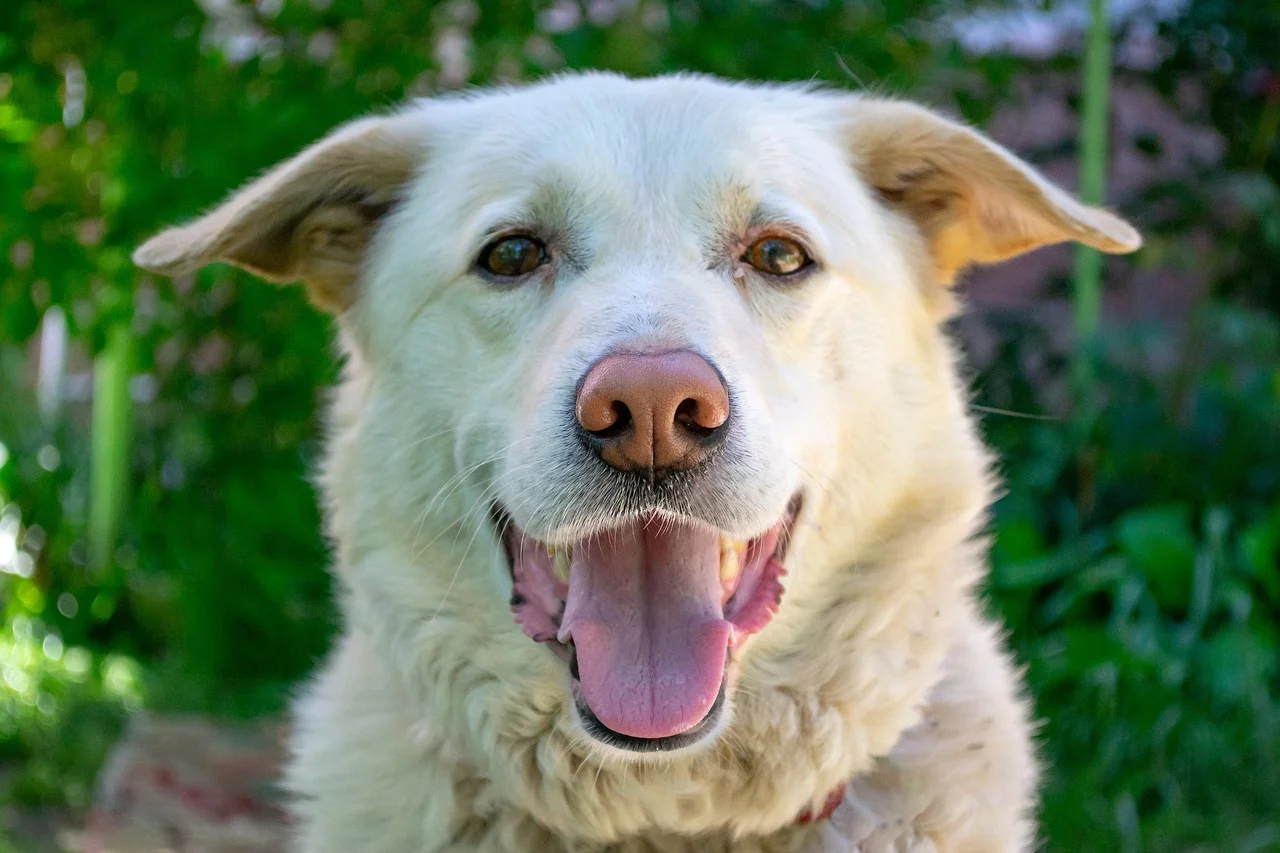Pyrador, Lapyrenees, Pyrelab, Labrador & Great Pyrenees Mix, or Labrenees are all awesome names referring to the Lab Great Pyrenees Mix. Designer dogs have been on the rise in the past years with people arguing that they are healthier and have a bigger lifespan than purebreds.
Pyrador is a result of crossbreeding pure Labrador retriever and the Great Pyrenees. Their temperament and appearance will greatly depend on which parent they inherited much from.
Before you decide whether this is the correct breed for you and your family, read this article to the end to have a concrete solution.
Labrador & Great Pyrenees Mix History
The best way to understand the history of a designer dog is by studying their parents first. Let’s understand why each bred was bred to know what to expect of the great mix of the duo.
Labradors

Labradors are the best dogs because they rule the hearts. In many ways, they are both affectionate and fierce. Labradors are also very protective of their owners and families. They are also excellent with children. Labradors are a popular breed among people because they are loyal, protective, and friendly. Overall, they are an outgoing, happy dog breed that enjoys interacting with people. Having them as one of the parents will undoubtedly result in a wonderful puppy.
The Great Pyrenees

The Great Pyrenees are mountain dogs. Their initial responsibilities include defending the herds from wolves and bears. The Pyrenees are “great” because they were mountain protectors and rulers for centuries. They also have a large and powerful body that aids them in performing their duties effectively. This breed is also a wonderful human companion. Choosing the Great Pyrenees as one of the parents will result in a puppy with all of the watchdog abilities that any dog should have.
Labrador & Great Pyrenees Mix Appearance and Size
Both the parents of a Pyrador are big dogs meaning they inherit their big size. Mostly, the males are a bit larger than the females.
The average female Pyrador stands 23-27 inches tall and weighs 70-90 pounds. A male Great Pyrenees Lab Mix, on the other hand, stands between 25 and 29 inches tall and weighs between 80 and 100 pounds.
The majority of Great Pyrenees Lab mixes inherit their Great Pyrenees parent’s shaggy white coat. This is a double coat that is dense and sheds a lot. Because labs have a double coat that sheds a lot, expect them to shed a lot of whatever they get! Brushing daily is the most effective way to keep this under control.
Since this is a dominant gene, most Pyrador dogs are white, and breeders frequently control for this valuable trait.
Other colors that are common in Pyradors are white, cream, yellow, brown, gray, or black.
Pyradors Temperament
Pyradors are instinctively protective of their family. Their Pyrenean ancestors endowed them with the ability to protect flocks. While he may not need to protect you from wolves, he may not be the friendliest to the delivery person. He will, however, warm up to family members or regular visitors over time. The Pyrador will eventually develop a social and playful personality.
Labrador & Great Pyrenees Mix Exercise Requirements
It is critical to keep your heavy dog in shape. Obesity is a killer for these breeds and can cause health problems. Because Pyradors are outgoing dogs who enjoy playing, provide them with a variety of physical activities. They require one hour of walking per day.
Labrador And Great Pyrenees Mix Grooming
The Pyrador takes on the Great Pyrenees coat. It is long and woolly in texture, and you should expect to brush her at least once a day. You may need to increase this to twice a day during shedding season to keep her coat looking nice and your home clean.
The breed has floppy ears that are susceptible to infection. Check them once a week and use a damp cloth to remove any wax or debris. Brush his teeth at least twice a week and only bathe him on rare occasions.
Labrador & Great Pyrenees Mix Health Issues
The Pyrador is a reasonably healthy mixed breed with a life expectancy of 10 to 12 years. Because he is a mixed breed, he could inherit the health problems of either parent, so here are the most common ones:
- Joint dysplasia
- Bloat
- Osteosarcoma
- Cancers
- Retinal atrophy
- Deafness
- Wobbler’s Syndrome
- Ectropion
Labrador & Great Pyrenees Mix Nutrition
Depending on his size and energy level, the Pyrador is likely to consume around 3 cups of kibble per day. Because he is a large dog, it is critical to feed him high-quality kibbles made specifically for large breeds, as they contain the best ingredients for bone growth control. If your Pyrador inherited a big body, you should feed him food meant for Pyrenees parents. All stage and all-breed kibbles should be avoided because it leads to health issues in big breeds
Labrador & Great Pyrenees Mix Puppy Cost
A Pyrador puppy from a certified breeder will cost around $1,000, but depending on his parentage, size, and location, it can cost up to $1,500. You should not buy a puppy without researching the reputation of the breeder. Also, you shouldn’t conclude that an expensive puppy is a quality puppy always.
Conclusion
A Labrador and Great Pyrenees Mix is a great dog who can relate well with your family members and is very welcoming to new people.
If you can provide this pooch with all the above-mentioned requirements, you can have a great companion who will brighten your days.
Other Labrador Mix;

